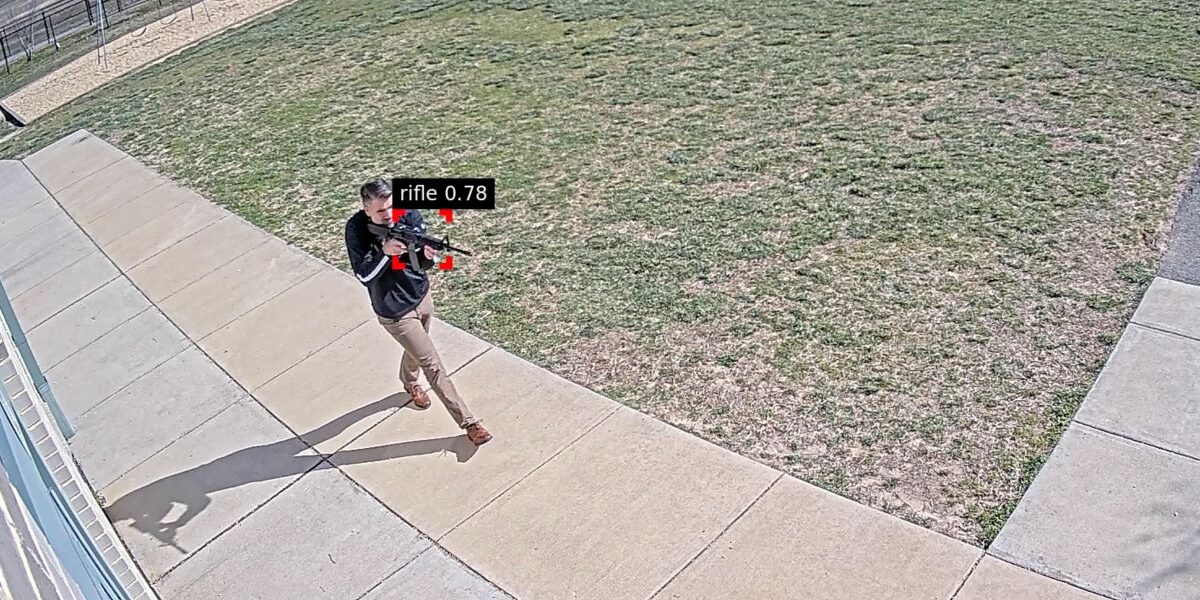By Ara H. Bagdasarian
As concerns about school safety continue to grow, schools are looking for new and innovative ways to protect their students from harm.
One approach that is gaining traction is the concept of building an “invisible fortress” around schools. This involves using a combination of technology, design, and security measures to create an inconspicuous environment that provides early warning and action to prevent harm.
The idea behind an invisible fortress is simple: create a safe and secure environment that is difficult for outsiders to breach yet is not visibly obtrusive. This can be achieved through a variety of methods, including the use of security cameras, artificial intelligence, access control systems, and other advanced technologies.
Additionally, schools can utilize design features such as a single entry point that makes it more difficult for intruders to enter the building or access sensitive areas.
The Technology Behind an Invisible Fortress
One of the key components of an invisible fortress is to use advanced technologies to keep a watchful eye to secure the school’s perimeter. This can include a variety of technologies, such as security cameras, artificial intelligence, access control systems, and emergency notification systems.
Security cameras are essential to an invisible fortress, as they continuously monitor the school environment. This can help school administrators identify potential threats before they become a danger.
Additionally, security cameras can help law enforcement respond more quickly to any incidents that do occur. These abilities are exponentially enhanced by employing Artificial Intelligence.
Utilizing artificial intelligence (AI) is the crucial element in converting passive security cameras into proactive threat monitoring systems. The task of manually monitoring 10 or 100 cameras would overwhelm any individual, but with AI-powered gun detection software, continuous surveillance becomes feasible, operating non-stop 24/7. This technology offers early warning alerts for potential threats. AI gun detection is a virtual “sentinel” diligently safeguarding the perimeters of school or church campuses.
Once a threat is detected using security cameras running AI-gun detection, it is important to use an Emergency Notification System (ENS) to automate emergency response actions. This can include summoning law enforcement and first responders, notifying people in the school to follow lockdown procedures, and updating the school website and social media with a message notifying parents of the emergency and to remain off-campus until further notice. If the school does not communicate with parents, students will likely send text messages and post to social media with their own perspective of the incident. Finally, if an active threat is detected outside the school, the doors can automatically be locked using an access control system.
Access control systems are another important technology used in an invisible fortress. These systems allow school administrators to control who has access to the building, as well as specific areas within the building. This can help prevent unauthorized individuals from entering the school, as well as restrict access to sensitive areas like classrooms and administrative offices. Access control systems should be integrated with the ENS automation system, so doors can automatically be locked if a threat is detected.
Schools Starting to Implement an Invisible Fortress for Security
While the concept of an invisible fortress is still relatively new, there are already several examples of schools that have implemented this approach to school security. One such example is Charles County Public Schools in Maryland.
The security design of the school includes a single point of entry, access control systems, security cameras, AI-powered gun detection, and other advanced technologies that make it difficult for outsiders to penetrate the building.
The design of the school includes a single point of entry, with all visitors required to pass through a security checkpoint before entering the building. Additionally, the school has implemented various design features that make it more difficult for intruders to access sensitive areas, such as classrooms and administrative offices.
How to Start Building an Invisible Fortress for Your School
If you are interested in implementing an invisible fortress approach to school and church security, there are several steps you can take to get started.
First, it is important to assess the current security measures in place at your school. This includes reviewing any existing security cameras, access control systems, ENS, and other technologies. It is also important to evaluate the design of the school and identify any areas that may be vulnerable to intrusion.
Once you have identified your school’s security needs, it is important to work with a team of experts to develop a comprehensive security plan. This may include the installation of new security cameras, gun detection software, access control systems, and other advanced technologies, as well as design modifications to make the school more secure.
It is also important to train staff and students on the new security protocols to ensure that everyone is aware of the new procedures and understands their role in maintaining a safe and secure environment.
It is relevant to note that there is federal funding through Homeland Security’s Nonprofit Security Grant Program (NSGP) to support physical security enhancements included in the invisible fortress approach.
In conclusion, an invisible fortress approach to school security is an innovative and effective way to protect students, staff, and visitors from harm.
By using a combination of technology, design, and security measures, schools can create a secure environment that can provide early warning of threats that can keep people out of harm’s way.
Ara H. Bagdasarian founded Omnilert in 2004, which pioneered the first mass emergency notification system and more recently introduced AI-powered visual weapons detection software to identify firearms using existing security cameras. In 2021, he founded ZeroNow, a nonprofit formed by safety technology and education leaders to end school violence, www.zeronow.org.






